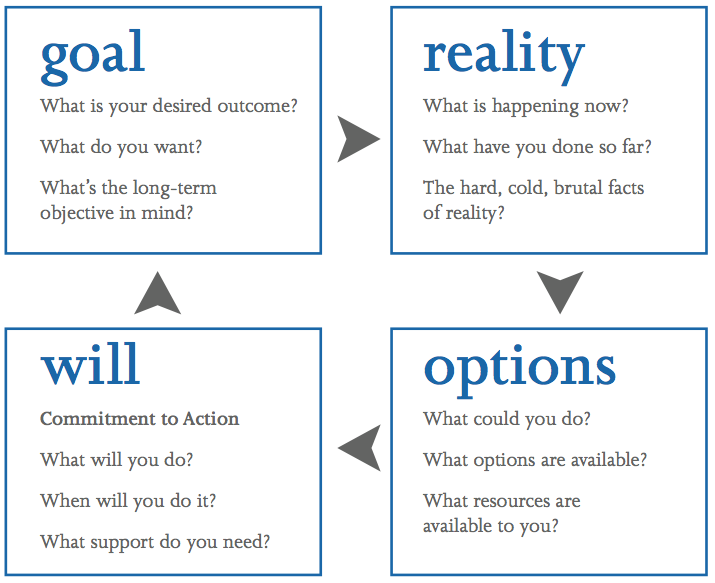Performance management is the process of continuous feedback and communication between managers and their employees to ensure the achievement of the strategic objectives of the organization.
A streamlined performance process provides benefits in a number of ways.
Benefits:
-
Align performance to goals and objectives
-
Provide a basis for promotion/transfer/termination
-
Avoid the painful Performance Improvement Plan (PIP) process
-
Improve communication
-
Enhance employees effectiveness
-
Reduce turnover
-
Identify development opportunities
Process
The Performance process is a continuous process and consists of the following parts:
-
Prompt Feedback, Coaching & Development - ongoing and ad-hoc
-
Regular 1:1
-
Goal setting/review, engagement survey
|
|
Q1 |
Q2 |
Q3 |
Q4 |
||||||||
|
|
Jan |
Feb |
Mar |
Apri |
May |
Jun |
Jul |
Aug |
Sep |
Oct |
Nov |
Dec |
|
360 Performance Review |
|
|
Comp |
|
|
|
|
|
Dev |
|
|
|
|
|
|
|
|
|
|
|
|
|
|
|
|
|
|
Growth Planning |
|
|
|
|
|
|
|
|
|
|
|
|
|
Stay Interview (not implemented atm) |
|
|
|
|
|
|
|
|
|
|
|
|
|
Annual Strategy setting |
|
|
|
|
|
|
|
|
|
|
|
|
|
Quarterly OKR |
|
|
|
|
|
|
|
|
|
|
|
|
|
Recurring 1:1 Meetings (Continuous coaching) |
x |
x |
x |
x |
x |
x |
x |
x |
x |
x |
x |
x |
|
Real Time Feedback |
Ongoing |
|||||||||||
|
Update Goals & Growth Plans |
Ongoing |
|||||||||||
1:1
Meeting frequently and individually with team members can require a large time investment but can identify issues early and provides a forum for the manager to give feedback and guidance.
You can find additional information on how to conduct an efficient 1:1 here.
360 Performance Review
We are doing twice a year formal performance reviews. Each check-in has a specific focus.
Q1: Review H2 performance and attainment of goals/OKRs/KPIs, Compensation review
Q2: Review H2 performance and attainment of goals/OKRs/KPIs, Professional development
We use Leapsome for all our reviews. You can find some information about the tool here.
Here you can find additional information about “How to prepare for a review” and “Performance Calibration”
Strategic Goals, OKR & KPI
Please find additional information https://mostly-ai.atlassian.net/wiki/spaces/Public/pages/897122378.
Coaching
GROW is a simple framework to teach managers about coaching conversations. This model stresses the importance of adapting and flexing coaching styles based on the team member’s needs and receptiveness.
Feedback
Giving feedback can be a scary process which makes it hard to do. This is because there are fears of damaging the relationship, being wrong, losing face or hurting the person. Holding back on providing feedback because you feel it isn't your place (if you are a peer) or believing it won't make a difference are also some reasons why we hold back.
The consequences of holding back can have a significant impact to MOSTLY´s culture. Patrick Lencioni, in his book The Five Dysfunctions of a Team (2002) cites the following five consequences:
-
Inattention to Results
-
Avoidance of Accountability
-
Lack of Commitment
-
Fear of Conflict
-
Absence of Trust
Elements of good feedback
-
Timely:
Employees must receive the feedback as close to the event as possible.
-
Candid:
Providing candid feedback means not being afraid to give your honest and constructive opinion on something, such as the performance of an employee or co-worker.
-
Specific:
Feedback must be concrete and relate to a specific goal/situation.
-
Actionable:
Effective feedback not only provides guidance to help an employee perform tasks correctly, it also clarifies expectations, builds a person’s confidence, and fosters trust between a worker and the manager.
-
Make it safe:
Feedback should be presented in a positive, tactful and non-threatening manner. The employee providing feedback should remain calm and professional throughout the process. Additionally, feedback should be provided in the most appropriate location. For instance, any negative feedback should be given in private.
Cross cultural feedback
Could the individual’s background affect the way they prefer to receive feedback?
Team members from many different cultures and backgrounds might respond to things differently. You may need to adapt your tone and style according to the individual and the relationship you have with them. Some things to think about are:
-
Do you need to build relationship before candor is comfortable?
-
Is their communication generally explicit or implicit?
-
Influence of hierarchy in direct feedback?
Reading The Culture Map can help you understand the communication and feedback styles of different countries. Something very useful at MOSTLY AI.
The S-B-I Feedback Tool
The SBI Feedback provides a simple structure to deliver actionable and effective feedback. SBI stands for:
Situation: you outline the situation you are referring to, so that you can provide clear context. When and where did you observe the situation? This gives the other person a specific reference point.
Behavior: you address the behavior you have seen. Avoid making assumptions or subjective judgments about someone's behaviors. These could be wrong, and they may undermine your feedback.
Impact: you highlight the impact of the person´s behavior on you, the team, the organization
